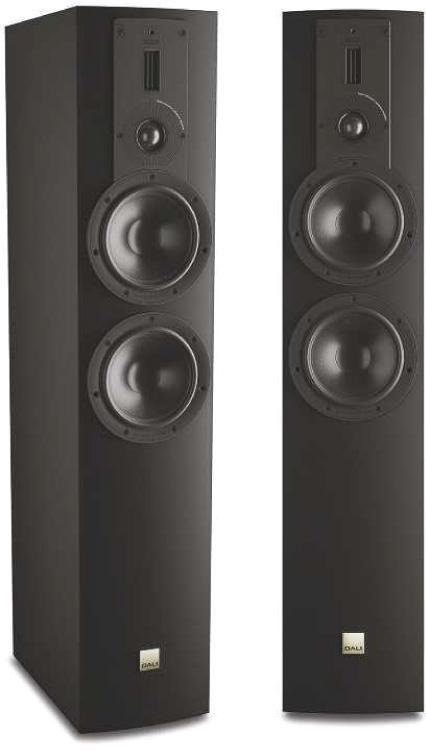DALI Rubicon 6 Review
Despite being the cheapest here, it’s got absolutely everything – but that isn’t to say it’s a pig with lipstick on. DALI Rubicon 6 Review
ORIGIN Denmark/China
TYPE 2.5-way floorstanding loudspeaker
DIMENSIONS (WxHxD) 200 x 990 x 380mm
WEIGHT 20.2kg
FEATURES
• 1x 45mm ribbon tweeter
• 1x 29mm soft dome tweeter
• 2x 165mm bass drivers
• Quoted sensitivity: 88.5dB/1W/1m (4ohm)
DISTRIBUTOR DALI UK

This speaker reminds me of Japanese cars of the Seventies–the ones that gave European rivals so much to worry about that they had to introduce quotas. Not only does it have a massive spec sheet, it’s surprisingly well designed and engineered, and devoid of gimmicks. I imagine some of DALI’s rivals wonder how on earth it does it…
This is a good-sized floorstander that is decently made; it isn’t one of the heaviest here, but nor does it feel cheap. Its styling is ok but not the prettiest, yet when you look at its drive unit complement you’ve got to sit up and take notice. Like the Kerr K320 and Monitor Audio Gold 300, it sports a ribbon supertweeter, which is something you’d expect on speakers way more expensive than this, plus a soft dome tweeter working in unison; the two cross between one another either side of 14kHz, DALI says. The dome works down to 2.6kHz, then the upper wood fibre cone driver kicks in; the lower one comes alive at 800Hz and below.
The result is a very wide claimed frequency response of 38Hz to 34kHz (-3dB). Quoted sensitivity is pretty good, but nominal impedance is 4ohm so make sure your amp is happy powering this sort of load. The cabinet has twin rear-firing bass reflex ports, each loading one of the two bass drivers. Placement needs a little more care than some in this group; in my room it works best about 40cm from the rear wall, toed-in slightly.
Sound quality
The first time you hear the DALI, it sounds most impressive, then you realise it has less resolution than any of the others here in the midband, so you’re a bit disappointed. Then you keep listening and it’s hard not to be charmed by its inviting, easy-going nature all the same. Being the cheapest in the group, we wouldn’t expect it to out-punch the pricier designs, yet still it transpires to be a perfectly pleasant product.
The first thing that strikes you is its bass and lower midband warmth. This is a euphonic-sounding design that makes thin recordings a bit fuller and richer. It comes from its two bass drivers, but you could say the effect is exaggerated by its super-smooth treble. The speaker doesn’t have the bite and the incision of others here, yet is still enjoyable – as New Gold Dream shows. There is some low frequency overhang, slightly lessening the impact of the bass drum and softening the bass guitar. Yet it is still really engaging.
A euphonicsounding design that makes thin recordings richer
The midband isn’t the most forensic, lacking the clarity to differentiate between vintages of recordings. Harold Land’s The Fox – from 1959 – doesn’t sound that different to Goldie’s Timeless from 1992. Yet both are good. This is a smooth and forgiving speaker that you can listen to all night. It also suits cheaper ancillaries, taking the sting out of bright solid-state amps.
Conclusion
London Symphony is spacious and expansive left and right, but depth perspective isn’t so great and the Rubicon 6 sits on dynamic crescendos somewhat. But the excellent ribbon supertweeter invests the recording with more atmosphere than most here. Overall, a charming but flawed design that’s super value when you take its price into consideration






